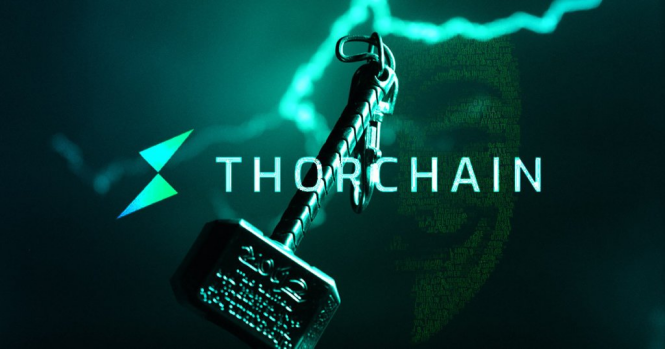 In today's blockchain ecosystem, RUNE tokens, as the core asset of THORChain, play a vital role. RUNE is not only a medium for transactions, but also the key to maintaining network security and stability. This article will delve into the incentive mechanism of RUNE, especially how to balance the income distribution between node operators and liquidity providers through the "Incentive Pendulum".
In today's blockchain ecosystem, RUNE tokens, as the core asset of THORChain, play a vital role. RUNE is not only a medium for transactions, but also the key to maintaining network security and stability. This article will delve into the incentive mechanism of RUNE, especially how to balance the income distribution between node operators and liquidity providers through the "Incentive Pendulum".
How the excitation pendulum works
The main function of the incentive pendulum is to control the flow of system revenue between node operators and liquidity providers. This mechanism is mainly adjusted based on Effective Security Bond (Effective Security Bond) and Total Vaulted (Total Vaulted). At the same time, it also takes into account the Effective Bond and Total Pooled to ensure fair and stable distribution of rewards.
Key variables: The operation of the incentive pendulum depends on several key variables:
Bond Hard Cap: This is the maximum bond for the bottom two-thirds of active node operators, ensuring that a single node does not have an undue impact on the total bond.
Total Effective Bond: The sum of the bonds of all active node operators, up to the bond limit. This design helps distribute margin power more evenly among node operators, thus maintaining the security of the network.
Effective Security Bond: The total bond of the bottom two-thirds of active node operators.
Vault Liquidity: The total value of L1 assets in all Asgard vaults, calculated by RUNE, including pooled L1 and trading account L1.
The balance of network capital
THORChain's capital may become unbalanced over time. When there is too much capital in the liquidity pool, network security will be threatened; and when nodes have too much margin, network efficiency will decrease. In this case, the network will automatically adjust the reward mechanism:
When the network is insecure: Increase the rewards of node operators (including block rewards and liquidity fees), while reducing the rewards of liquidity providers.
When the network efficiency is low: the rewards for liquidity providers will be increased and the rewards for node operators will be reduced.
equilibrium system state
THORChain can be in one of five main states, which can be observed through the relationship between guaranteed RUNE and vault liquidity. This reflects the amount of RUNE bonded by the node operator and the liquidity held in Asgard vaults both within and outside the liquidity pool.
At its best, the effective security margin is approximately twice the liquidity of the vault.
The total effective margin is approximately 1.5 times the effective security deposit.
Total pooled RUNE accounts for approximately two-thirds of the vault’s liquidity.
The result of such allocation is:
Approximately 67% vs. 33% split between total security deposits and pooled RUNE.
50% to 50% split between total security margin and vault liquidity.
It is important to note that benefits are paid based on the liquidity provided, not based on the revenue share ratio.
Unsafe state: When the system becomes unsafe, the capital in the vault will be higher than the capital tied. At this point, the RUNE in the vault will equal the effective security deposit, resulting in a 50/50 split. This situation is undesirable as it means node operators may team up to steal assets.
To correct this problem, the system will increase the rewards for node operators and decrease the rewards for liquidity providers. This will result in greater incentives for node operators to restore the security of the network.
Summarize
The incentive mechanism of the RUNE token achieves a dynamic balance between node operators and liquidity providers through the design of the incentive pendulum. This not only promotes network security, but also improves overall efficiency. As blockchain technology develops, understanding these mechanisms will be crucial for investors and users when participating in THORChain.